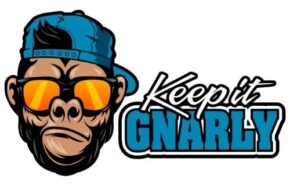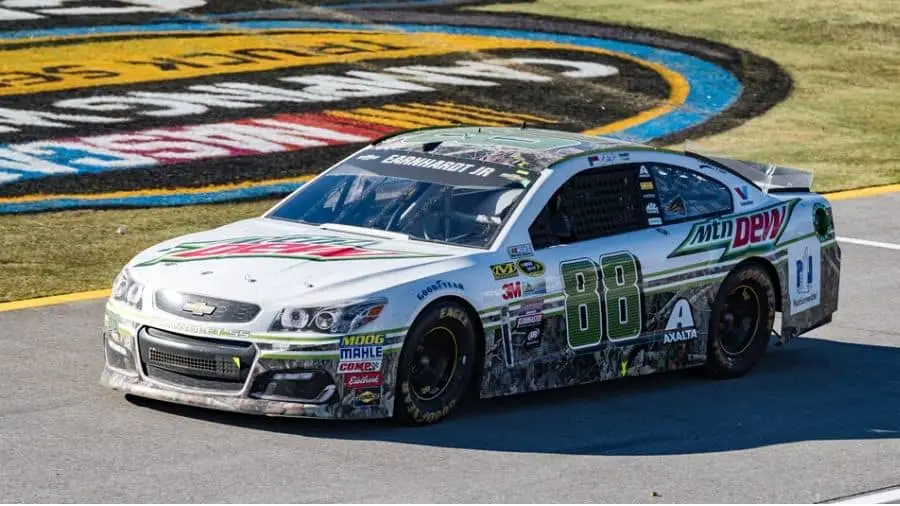
Only a few inches from the concrete wall, the 43 thundering NASCAR cars racing past at 200 mph are inch-perfect over the 300 laps and 3-hours of pounding around the race track. Masters behind their cars’ steering wheels, you might be wondering how and where do NASCAR drivers’ practice. I’ve found the answer to this for you and you’ll be surprised at just how these professionals are able to improve their speed and driving skills.
NASCAR practice time is heavily restricted: drivers are permitted only 4 practice sessions for each race. Between events, only limited testing at selected tracks is allowed for race car development. Drivers also make use of simulators to practice their race skills.
The physically and mentally demanding nature of NASCAR racing and it’s 10-month long race season requires drivers to be in peak physical condition, while developing their race cars into race winners is a priority. The life of a NASCAR driver is far from the glamorous side you see on TV; we’ll take you behind-the-scenes for you to learn just what it takes to be race-winning NASCAR driver.
Table of Contents
How and Where do NASCAR Drivers Practice?
For sports such as football, cricket or rugby, there’s no limit on the amount of practice an athlete can do. In fact, the more a sportsperson practices their skills, the faster they will develop to succeed in their chosen sport.
In a sport as dangerous as motorsport, you’d think that race drivers would spend as much time on the race tracks to practice and improve their skills and speed. Due to the very high costs of motorsport and even more so at the very top level such as NASCAR, teams and drivers are heavily restricted in the amount of practice time allowed during a season and on race weekends.
When NASCAR drivers are given the chance to hit the track to practice, they make the very most of that opportunity to learn more about their race cars and of the race track they’ll be racing on.
A typical race weekend begins on a Thursday and ends on a Sunday after the race. The first time that a NASCAR Cup Series driver is allowed onto the race track is on a Friday morning.
NASCAR drivers are allowed 2 practice sessions of just 1 hour each on Friday. They need to learn this new track (they race each track only once per season), to acclimatize to the characteristics of the track and to find the perfect settings for their cars for the race on Sunday.
Drivers usually complete a maximum of 40 laps in each of these Friday practice sessions but aren’t restricted by the number of laps – only by the 1-hour slots.
These practice sessions are incredibly busy: every race team is in the pit lane with their race cars circulating on the race track too. While experienced NASCAR drivers have competed at all tracks over many seasons, each new race weekend and season presents a steep learning curve for the drivers to get to grips with their car and the track (that has changed over the past year).
Each lap they can tick off allows them to better understand how their race cars perform and they learn more of what is required to dial their cars in for the fastest laps for race day.
Saturdays comprise of another 2 practice sessions of 1 hour each followed by an intense, 1-lap-only qualifying session. During these practice sessions, the drivers fine-tune their cars for as much speed as possible for the best performance in the qualifying. Apart from the actual race, the qualifying run is the most important time on the track for NASCAR drivers.
Qualifying is a thrilling experience for NASCAR fans and drivers alike. With a one-lap shot at setting the fastest lap time that decides a driver’s starting position for the race, each driver has the whole track to themselves for just 1 lap.
Drivers usually push their cars even faster in qualifying than the actual race, with the speed difference sometimes 15-20 mph quicker in qualifying than in the race due to the way in which the drivers push their cars to their absolute limits for just the one qualifying lap.
While those 4 practice hours before a race don’t seem enough to learn everything about a race track and to dial their race car in for the best setting for the race, drivers make use of advanced driving simulators in between races to learn as much about their cars. These simulator rigs are based at their teams’ race shops or factories, while some drivers have set up their own in their homes to get in even more practice time.
Costing tens of thousands of Dollars, these driving simulators are very far from the PC or console game fans play at home. These simulators have race car seats, steering wheels and pedals just like in their race cars, and the software is highly complex to provide drivers with the most realistic driving experience.
NASCAR drivers are able to replicate on-track settings (and change them) to allow them to better understand how their car will respond. So, when they pull on their helmets in their race cars for an actual race lap, they know exactly what to expect and what it will take for them to be fast.
How do NASCAR Drivers Prepare for a Race?
Do you think NASCAR racing is simply about driving around in circles and that anyone could do a good job of it? Nothing could be further from the truth. NASCAR drivers need to be physically and mentally tough to hack it and to win races.
To concentrate for 3-4 hours over 300 laps at 200 mph in a race car that’s 50 degrees Celsius requires a driver to have great stamina and upper-body strength to wrestle the steering wheel through the turns. Drivers lose about 10 pounds in weight from sweating during each race.
Apart from the 4 hours of practice sessions allowed for drivers over a race weekend, and many hours spent on their advanced driving simulators, NASCAR drivers work very closely with their teams’ engineers to resolve issues and to find the best and fastest setup for their race cars.
Drivers will also pour over previous race footage from the same track to study how other drivers’ performed as well as their own, to learn what to expect during different times on the race track and how the track changes after being raced on.
As with all athletes, a rigorous gym and cardio work schedule will keep them fit and primed for hours in the race car on Sundays. To withstand the physical demands of driving at 200 mph, many of NASCAR’s Cup Series drivers’ personal trainers will work on certain muscle groups specific to the nature of their racing.
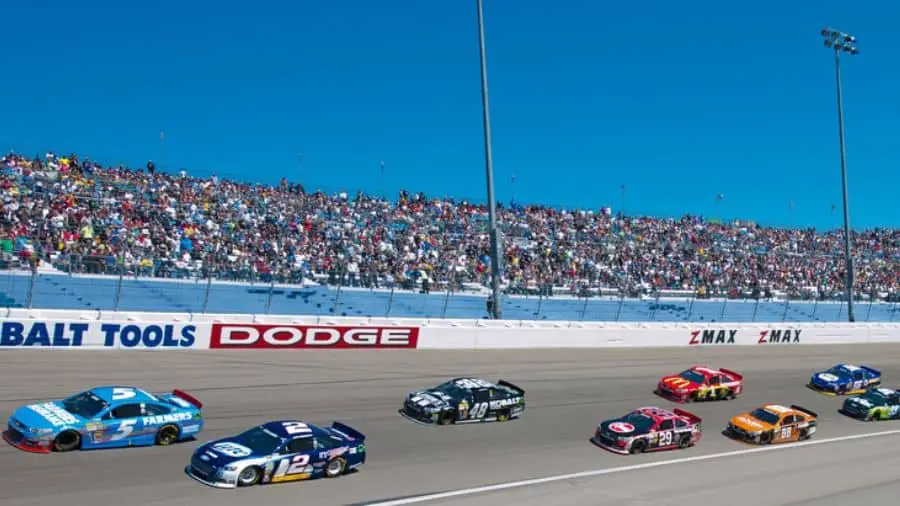
These V8-powered, 750 horsepower racing cars generate 3 Gs of force through turns – which is the same as a NASA rocket generates on launch. This means that the drivers’ arms, necks and heads are subjected to forces that make them weigh three times as much. Imagine using your arms to try to make minute changes to your car’s steering wheel at speeds of 200 mph for 3-4 hours when your arms weigh that much…
NASCAR drivers’ exercise their necks and upper body strength to not only allow them to control the powerful car but also to endure the punishing 3-4 hours in the race car.
Apart from high-intensity exercise and time on the simulator, NASCAR drivers study reams and reams of data about their cars’ performance. Along with engineers, the drivers develop strategies for the race to optimize their car’s setup and performance.
A race strategy is important to determine how fast and how many laps a driver will race between pit stops. Running the car with lighter fuel loads or heavier fuel loads will affect their race pace, but a clever strategy will make a driver faster.
Each pit stop costs a NASCAR car about 30-40 seconds, so if a driver can reduce the amounts of time in the pits or being able to race faster to compensate for those pit stops, then the driver might be in the fight for the race win when it comes to the race’s final lap.
A racing driver needs to possess a thorough knowledge of their race car’s various systems and setups. Even though engineers use complex computer programs to investigate a car’s system, the most important feedback for fine-tuning a car’s overall performance is the driver.
Drivers usually spend hours with their engineers before a race weekend to study all aspects of what and how a car’s performance is affected by the track, weather conditions and different car setups.
How do NASCAR Drivers Improve their Speed with Practices?
Casual motorsport fans often think that NASCAR doesn’t require a lot of skill because the cars simply drive around in circles. Nothing can be further from the truth.
Each track has unique characteristics that a driver needs to master before race day, and it is only in the practice sessions that drivers can learn this.
Each track has what drivers call “grooves” – the part of the track that provides the best grip for the car’s tires. Some tracks have only one groove; while others have two grooves, one is a low groove and the other a high groove.
Since most of NASCAR’s race tracks are oval in shape, the groove is the fastest and most efficient way for a racing car to go around it.
One-groove tracks mean that drivers will find it much more difficult to overtake another car. When a driver moves off the groove, the car becomes more difficult to handle and usually means speed will decrease. For the two-groove tracks, drivers find it much easier to overtake as there are two “racing lines” that provide optimum grip for the race car’s tires.
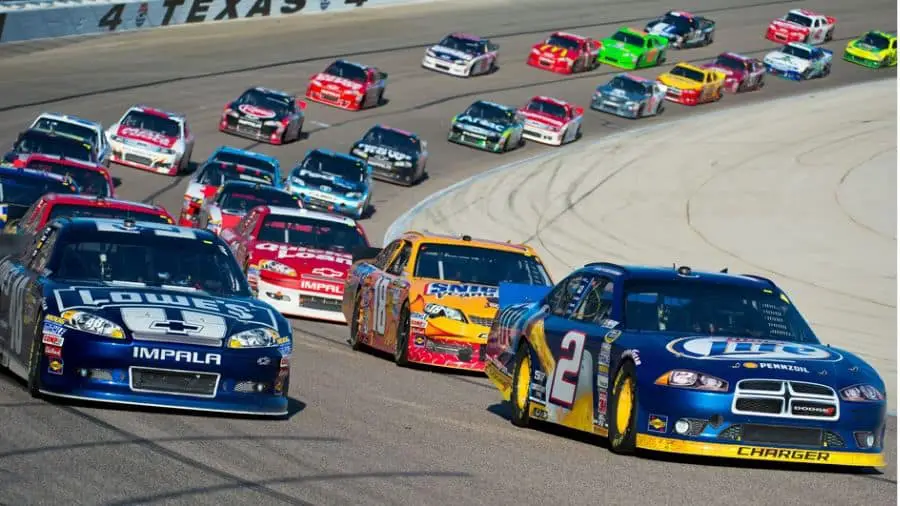
By the way, when you arrive at a NASCAR race track, you won’t be able to see the groove. Only after the drivers have left rubber on the track – the NASCAR cars’ tires are designed to wear and leave black lines through turns – does the groove become visible.
As the drivers post more laps, so the groove becomes more noticeable over the course of a practice session. By the end of the 400 or 500-mile long race on Sunday afternoon, the groove looks like a single black line around the track.
A driver needs to find the right balance for their race car in the grooves and when moving off the grooves. Overtaking is as much a part of NASCAR racing as the steering wheel is to turning: there are about 30 lead changes in each NASCAR race and a race driver needs to be comfortable and confident in the car’s setup to not only race in the groove but to also pull out of the groove to overtake.
The groove also changes in its grip levels:
- when the weather is cold, the rubber laid down on the track will actually serve as a coating over the asphalt and concrete surface of the track to actually make the groove slippery.
- On a hot day, that same amount of rubber laid down by the lapping race cars can begin to melt and make the surface sticky to offer more grip.
As most NASCAR race tracks have banked turns, which means that the track’s surface actually tilts inwards towards the center of the track’s bowl, the banking allows the drivers to maintain their speed without having to slow down.
The banking also has its own unique groove, and each groove has its speed requirements: for maximum speed, the high groove will slingshot the driver around the turn, but it is actually not always the fastest way through a turn as it uses more track; the most efficient way around a turn might be running from the outside of the track and then cutting across the surface to the inside where the banking is at its lowest.
From the center of the turn, called the apex, the drivers then float the cars at full throttle to move back to the outside of the track and use less track than the high groove.
As you can see, mastering the “groove” is essential to unlocking NASCAR speed.
NASCAR Driver’s Race Weekend Schedule
NASCAR racing has a long, tough season: 10 months of travelling across North America for 38 races. That’s a long season – the longest sports season in the USA, in fact. Apart from the gruelling 3-4 hour-long races over 400-600 miles every race, NASCAR drivers have a full schedule of duties on race weekends.
As we have mentioned, NASCAR drivers and their engineers have a close working relationship on race weekends. Tweaking every aspect of a race car and optimizing their race strategies requires many hours of discussions. The drivers also need to exercise and to rest for the demanding race on Sunday in which their bodies will be punished for over 3 hours inside a car that’s 50 degrees Celsius and lose 10 pounds from sweating.
Sponsors also need teams and their drivers to make numerous appearances at sponsor events, TV and media interviews, autograph signings and fan interactions – all squeezed into these 4-day race weekends.
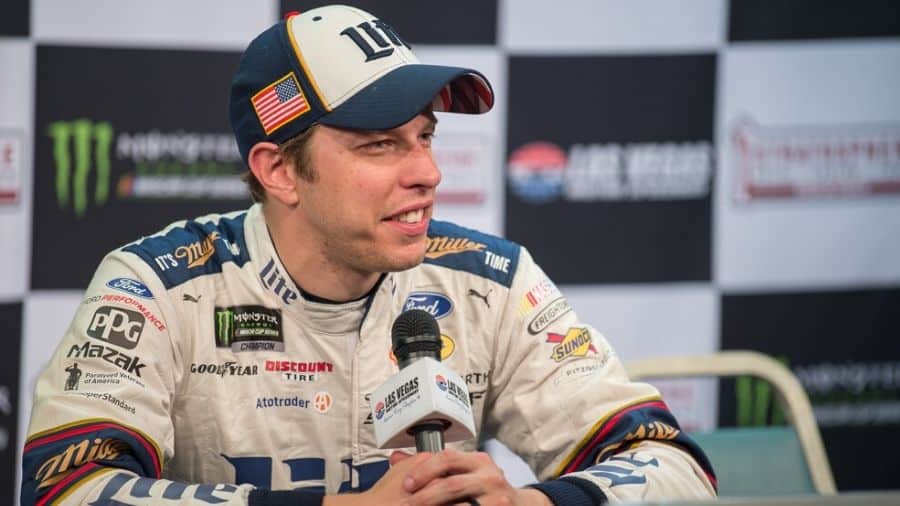
As professional athletes, drivers are also spokespeople for their teams and their multi-million Dollar sponsors. These PR and media responsibilities vary from race to race and driver to driver, but they are all-important in bringing NASCAR’s millions of fans closer to the racing action. Mixed with the high tensions that 200 mph racing brings and intense setup sessions with engineers, drivers need to remain available to sponsors, media and fans.
The first TV and media interviews take place on Thursday afternoon and the last one will be completed late into evening hours of Sunday – once all the NASCAR cars, team trucks and fans have long since packed up and left the track. This is, after all, how they earn their pay checks.
